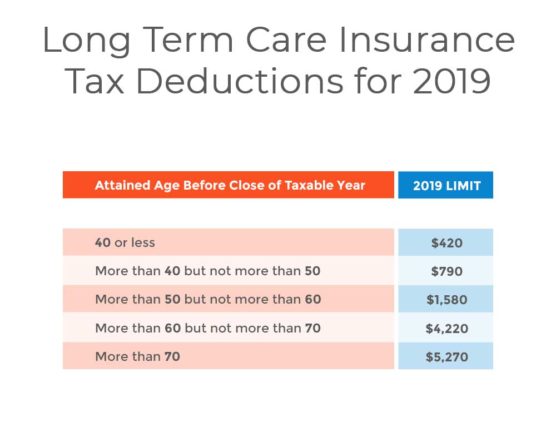Long term care insurance tax deductions are incentives given by the federal government to individuals with qualified policies, which are widely sold today. This is the government’s way of encouraging people to secure their future by purchasing a policy that pays for their long term care needs – long term care insurance policy.
Also, a way to lighten the burden of Medicaid from paying from long term care expenses.
So, yes, long term care insurance is tax deductible.
What is a Tax Qualified Long Term Care Policy?
A tax-qualified long term care policy means that that the policy adheres to the IRS rules and the 1996 Health Insurance Portability and Accountability Act (HIPAA). However, policies that were purchased before January 1, 1997, are grandfathered and considered as tax-qualified as long as the insurance commissioner of the state where the policy was sold approved them. But, most group long term care insurance no longer require this approval.
To find out whether the policy you bought before January 1, 1997, is tax-qualified, ask your insurer or the insurance commission in your state.
There are myriad of ways you can avail of tax deductions for long term care insurance premiums and they are as follows:
1. Long Term Care Insurance Tax Deductions for Individuals
Individuals can write off premiums since they can be itemized as medical expenses. However, only policyholders who will exceed 10% of their Adjusted Gross Income (AGI) are eligible for tax deductions while those 65 and up only need to exceed 7.5% of their AGI in order to be eligible for the tax incentive.
Take note that tax deductions on qualified policies have limits, which are based on the policyholder’s age at the end of the year. See below for the tax deductions last year and the current year.

2. Long Term Care Insurance Tax Deductions for Business Owners
You can deduct up to 100% of your tax-qualified long term care policy, medical and dental likewise your spouse and dependents as long as you fall under these categories:
- You reported on Form W-2 that you’re a shareholder and you own more than 2% of the outstanding stock of an S corporation.
- You are self-employed with a net profit reported on Schedule C, C-EZ or F.
- You’re a partner with net earnings from being self-employed, which is reported on Schedule K-1 (Form 1065), box 14 and code A.
For more details, here are the basic rules for tax-incentives for different types of business owners.
1. Sole Proprietors
On Form 1040, line 29, sole proprietors can deduct long term care insurance premiums as a self-employed health insurance expense. Since it is above the line for adjusted gross income deduction, it is not subject to the 10% AGI floor. But, the tax deduction limits based on age still apply.
It’s possible to deduct full premiums as a business expense and not be included in the spouse’s income if the spouse of the sole proprietor is a bona fide employee of the business.
In case the policy covers both the sole proprietor and the employee spouse, the tax incentive of the sole proprietor will not be subject to the tax limits based on age since it can be considered as a family coverage that is fully deductible.
2. Partnerships
Partnerships and LLCs taxed as partnerships can deduct tax-qualified policy premiums as guaranteed payments. These premiums are deductible by the partnership and will be added back to the partner of the income.
But, partners are considered as self-employed so that means they can deduct premiums over the line, which is subject to tax limits based on age but not on the 10% AGI limit. In short, the partnership would pay for the premiums and not the partners.
3. S Corporations
Members of an LLC, partners of a partnership or shareholders of more than 2% of a Subchapter S Corporation are taxed as self-employed. The member, partner, and shareholder can deduct premiums based on age limits. But, it is not subject to the 10% AGI threshold.
4. C Corporations
C Corporations are eligible to claim a 100% tax deduction as a business expense on the total premiums paid when it purchase long term care insurance on behalf of their spouses, dependents, and employees. The tax break is not subject to age-based limitations. However, the employer can be selective on employees it wishes to cover with long term care policy.
5. Long Term Care Insurance Tax Incentives Per State
States provide incentives to individuals with tax-qualified long term care insurance. However, the tax incentives vary from one state to another. Some states offer state tax incentives while other states don’t over incentives. Read AARP’s Federal and State Income Tax incentives for Private Long Term Care Insurance to know more about these state tax breaks.
Take Advantage of These Federal and State Tax Incentives by Securing a Policy
Purchasing long term care insurance is imperative nowadays due to longevity and the high risk of needing expensive long term care. People should plan early and secure their future and their family’s future by getting coverage for long term care. Compare policies and estimate costs by requesting quotes from top carriers to find the best policy for your long term care needs.

